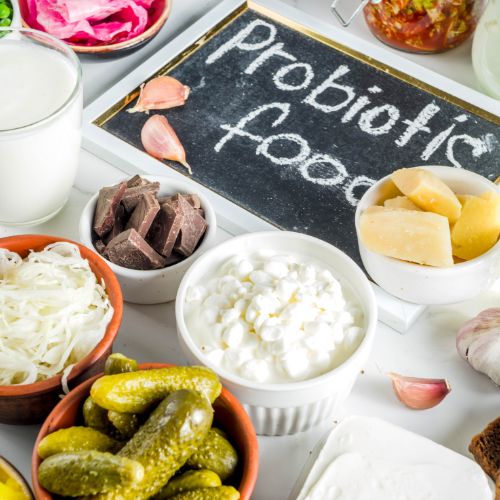How to Go Green, The Healthy Way!

Written by Dr. Jewel Alfoure, ND
How to Go Green, The Healthy Way!
-
Not all plant-based foods are healthy for everyone.
-
Some plant-based foods contain anti-nutrients that are hard to digest and may increase inflammation for some people.
-
Though some anti-nutrients are being studied for therapeutic value, some individuals suffer moderate to severe symptoms upon consuming them.
-
In order to get the health benefits of consuming plants, it is best to focus on consuming a higher ratio of leafy greens than fruits and seeds.
Some doctors of clinical nutrition advise against eating a diet high in inflammatory foods and point out that inflammatory foods may not be what most people regularly label as “unhealthy”. (1)

Universally Healthy Foods
-
Leafy greens are usually very well tolerated by most people.
-
People may have intolerances to fruits, seeds, nuts, legumes and grains.
-
Even if one does not have a genuine intolerance, foods that contain anti-nutrients, high sugar foods, and hard-to-digest foods should be limited.
-
It is always best to undergo an annual Elimination Diet to track if any seemingly-benign food causes any intolerance symptoms.
Most assume that animal products are the most inflammatory foods, though nutritional science demonstrates that some plant-based foods may be even more inflammatory and harder to digest. (1,2,3,4) Some plant-based foods may promote gastrointestinal fatigue due to their content of anti-nutrients. Lectins and phytates render the rest of the food less nourishing. Anti-nutrient-containing plants include the legume family and the grain family. (1,4,5,6,7)
The Lazy Path to Health
-
Greens are a cheap plant component, as they are not as taxing to make for the plant, and they contain high nutrient density.
-
Legumes contain phytates and lectins, which can compensate gut health and thus, make the whole body more susceptible to inflammation.
-
Fruits are high sugar/ high calorie and comparatively a lower nutrient-dense plant-based food.
-
Some doctors advise that fruit consumption is healthier when fruits are in season, and reducing fruit consumption leaves room for more beneficial sources of nutrients to be consumed.
Like other living beings, plants seek to transport their genetic materials to the next generation. Thus, they strive to enhance conditions that make the chances of survival and propagation high. Most seed-containing plant products contain a level of protection that the plant uses to deter animals from consuming seeds. While the disagreements between vegans, vegetarians and those following a carnivorous diet are never-ending, one source of fuel always remains safe, healthy and regarded with respect, and that source is leafy greens. (8,9)
Unlike greens, fruits are considered a much higher calorie plant product. While fruits contain a significant amount of nutrients, they also contain much more sugar and the fact that they incase seeds may mean that they allow for the consumption of at least some anti-nutrients with them (if seeds were consumed). (1,6,10)

Leafy greens are a dense source of nutrients that contains very few “irritating” compounds. The nutrient density of leafy greens does play a role in their regard as a health food; however, there is much more than simply nutrient density when it comes to greens. Greens are considered healthy because they have positive impacts on the physiology of the body. Evident by research, adequate greens intake can: (11, 12)
-
Improve bone density (13)
-
Provide anti-oxidants that support immunity (14, 15, 16)
-
Provide support for heart health (16,17)
-
Improve insulin resistance (17)
-
Regulate blood pressure (17)
-
Enhance/ regulate hormone levels (18)
The Ideal Way to Consume Greens
The Canada Food Guide proposes that one requires 7-8 servings of fruits and vegetables per day. Other sources promote healthy adults to have 10-12 servings of greens only per day. While greens intake is essential both as a source of nutrition and as an enhancer of physiology, the most significant limitation of greens intake is volume. Greens are a high-volume food. To take in 5 servings of greens, one must have an excessive bulk of green leaves. Overall, most of us are not accustomed to chewing and digesting all the fibrous bulk that comes with greens as our meals have grown to be smaller, more refined and less time-consuming to prepare and eat. Thus, juicing was born to promote high nutritional intake without the requirement of taking in very bulky, large amounts of food. (14-18)
The Juice Vs. Smoothie Conundrum

Both greens smoothies and green juices are considered healthy, however, green smoothies are a different breed of health foods. Smoothies contain the fibre of the plant and while fibre is healthy and important for gastrointestinal function, a fibre-free green juice can be up to 6 times more nutrient-dense. Additionally, the density of nutrient supply is not only an advantage as a reduction of bulk, but also as means of fast nutrient supply. The advantages of supplying nutrients fast include: (19)
-
Lower rate of oxidation
-
Faster bioavailability and therapeutic function
-
Convenience
The gastrointestinal system is a system that incases a lot of oxidation. Digestive enzymes rush to break down bonds. The process meant to make nutrients more bioavailable for absorption uses up quite a bit of the fast, highly-reactive antioxidants supplied by healthy foods. When nutrients are introduced scattered between fibres, they take longer to absorb, so; naturally, a smaller dose is provided. The other issue that anti-oxidants face is that they sit longer in the oxidizing medium of the stomach and are thus less likely to lose their anti-oxidant powers as they penetrate the body.
A greens juice ensures faster nutrient transfer, less transit time, and faster action in terms of nutrient buildup and physiological effectiveness.
On the other hand, greens supplied with their fibre introduce another benefit. With slowing down transit time, they also slow down the absorption of macronutrients, which means:
-
Lower chance of blood sugar spike
-
Longer satiety
-
Promotion of healthy probiotic growth
Providing the body with the “bulk” is quite essential as every meal is more likely to be filled with the introduction of healthy amounts of fibre. Additionally, probiotics grow and thrive on soluble fibre from whole foods. (15)
How To Take Greens For The Most Health Benefits?

References
-
Petroski W, Minich DM. Is There Such a Thing as “Anti-Nutrients”? A Narrative Review of Perceived Problematic Plant Compounds. Nutrients. 2020 Oct;12(10):2929.
-
Gautam AK, Sharma D, Sharma J, Saini KC. Legume lectins: Potential use as a diagnostics and therapeutics against the cancer. International journal of biological macromolecules. 2020 Jan 1;142:474-83.
-
He S, Simpson BK, Sun H, Ngadi MO, Ma Y, Huang T. Phaseolus vulgaris lectins: A systematic review of characteristics and health implications. Critical reviews in food science and nutrition. 2018 Jan 2;58(1):70-83.
-
van Buul VJ, Brouns FJ. Health effects of wheat lectins: A review. Journal of Cereal Science. 2014 Mar 1;59(2):112-7.
-
Shi L, Arntfield SD, Nickerson M. Changes in levels of phytic acid, lectins and oxalates during soaking and cooking of Canadian pulses. Food Research International. 2018 May 1;107:660-8.
-
Ramadass B, Dokladny K, Moseley PL, Patel YR, Lin HC. Sucrose co-administration reduces the toxic effect of lectin on gut permeability and intestinal bacterial colonization. Digestive diseases and sciences. 2010 Oct;55(10):2778-84.
-
Masters RC, Liese AD, Haffner SM, Wagenknecht LE, Hanley AJ. Whole and refined grain intakes are related to inflammatory protein concentrations in human plasma. The Journal of nutrition. 2010 Mar 1;140(3):587-94.
-
Singh G, Kawatra A, Sehgal S. Nutritional composition of selected green leafy vegetables, herbs and carrots. Plant Foods for Human Nutrition. 2001 Dec;56(4):359-64.
-
Natesh HN, Abbey L, Asiedu SK. An overview of nutritional and antinutritional factors in green leafy vegetables. Horticult Int J. 2017;1(2):00011.
-
Phillippy BQ, Wyatt CJ. Degradation of phytate in foods by phytases in fruit and vegetable extracts. Journal of food science. 2001 May;66(4):535-9.
-
Moradi S, Ziaei R, Foshati S, Mohammadi H, Nachvak SM, Rouhani MH. Effects of Spirulina supplementation on obesity: A systematic review and meta-analysis of randomized clinical trials. Complementary therapies in medicine. 2019 Dec 1;47:102211.
-
Zeng Y, Pu X, Yang J, Du J, Yang X, Li X, Li L, Zhou Y, Yang T. Preventive and therapeutic role of functional ingredients of barley grass for chronic diseases in human beings. Oxidative medicine and cellular longevity. 2018 Apr 4;2018.
-
Gupta S, Hrishikeshvan HJ, Sehajpal PK. Spirulina protects against Rosiglitazone induced osteoporosis in insulin resistance rats. Diabetes research and clinical practice. 2010 Jan 1;87(1):38-43.
-
Hirahashi T, Matsumoto M, Hazeki K, Saeki Y, Ui M, Seya T. Activation of the human innate immune system by Spirulina: augmentation of interferon production and NK cytotoxicity by oral administration of hot water extract of Spirulina platensis. International Immunopharmacology. 2002 Mar 1;2(4):423-34.
-
Saa DT, Turroni S, Serrazanetti DI, Rampelli S, Maccaferri S, Candela M, Severgnini M, Simonetti E, Brigidi P, Gianotti A. Impact of Kamut® Khorasan on gut microbiota and metabolome in healthy volunteers. Food research international. 2014 Sep 1;63:227-32.
-
WHEAT KB. Kamut®: Ancient Grain, New Cereal.
-
Miczke A, Szulinska M, Hansdorfer-Korzon R, Kregielska-Narozna M, Suliburska J, Walkowiak J, Bogdanski P. Effects of spirulina consumption on body weight, blood pressure, and endothelial function in overweight hypertensive Caucasians: a double-blind, placebo-controlled, randomized trial. Eur Rev Med Pharmacol Sci. 2016 Jan 1;20(1):150-6.
-
Simonsohn B. Barley Grass Juice. Lotus Press; 2001.
-
Ercolano EA. Caring for patients who use the Gerson method-an unorthodox nutritional program of cancer management. Journal of Holistic Nursing. 1983 Mar;1(1):27-31.
-
Keshani P, Farvid MS. Perceived benefits and barriers regarding high fibre food intake in type 2 diabetes patients-a qualitative study. Iranian Journal of Nutrition Sciences & Food Technology. 2012;7(1):11-22








Leave a comment